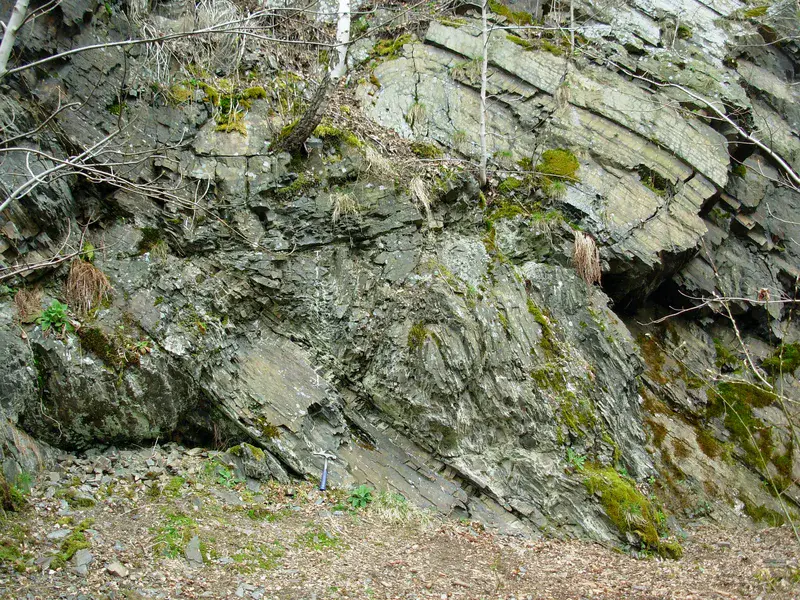
Triangle Zone
by David Tanner, LIAG Institute for Applied Geophysics, Hannover, Germany
The Harz Mountains of North Germany expose Paleozoic sediments that were deformed during the Variscan Orogeny. Carboniferous siliclastic sediments were deposited in a foreland basin setting, quickly buried and compressively deformed. This structure is a triangle zone formed by two major thrusts, working against each other to form the triangle. Typically these structures are found at the front of a thrust belt, but this is in the centre. Perhaps it represent a snapshot of progressive deformation. More importantly, the core of the triangle zone is filled with isoclinal upright folds, not a smaller thrusts and duplexes, as conventional wisdom suggests. See Tanner et al. (2010) for details.
Categories
Location
- Europe (3893)
- Western Europe (788)
- Germany (265)
- Exact location (10.4626 E, 51.8315 N)
Tags
Colours
Image properties
4200 × 3150 px;
image/jpeg; 10.3 MB
Camera:
Nikon COOLPIX L1
Taken on 20
April
2008
Submitted on 13 August 2014
Licence
Creative Commons Attribution-NonCommercial 3.0 Unported (CC BY-NC 3.0)
Credit
David Tanner (distributed via imaggeo.egu.eu)
Share
Appreciate
Report